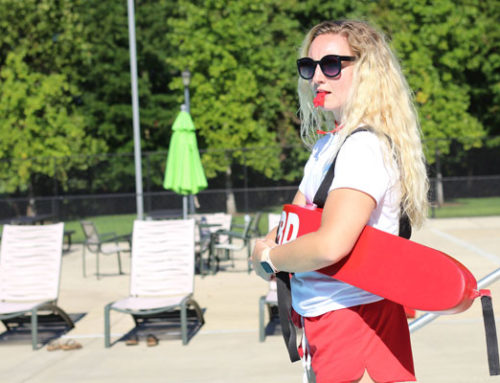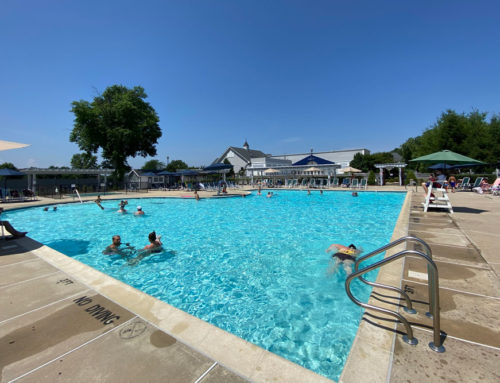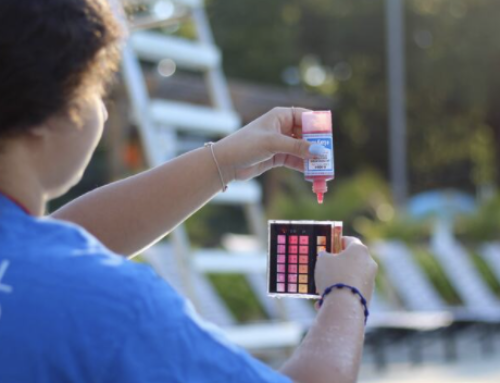
Three Steps to Safe Air and Water Quality at Your Pool
For commercial pool managers, nothing is more important than ensuring the health and safety of swimmers. Doing that successfully requires maintaining strong air and water quality.
Despite their best efforts, some pool managers fall short in providing a healthy pool environment. The Centers for Disease Control and Prevention (CDC), for example, reports that in routine pool inspections nationwide, more than 1 in 10 pools are operating with improper disinfectant levels. Since chlorine and other disinfectants are critical to preventing the spread of germs in water, notes the CDC, this finding is sobering, indeed.
In indoor pools, unhealthy air is also a common concern. While potentially deadly infectious biological organisms such as Legionella can be spread through the air in wet environments, the most common air quality issue plaguing pools is an excessive chlorine odor, which can cause the nose, eyes and lungs to burn and exacerbate allergy symptoms.
“The CDC is paying very close attention to air quality around indoor swimming pools,” notes Aquatic News and Review. “CDC realizes that many of the biological and chemical substances that are of concern while in the water are just as dangerous once they become airborne in the room.”
Fortunately, with the CDC’s recent release of the Model Aquatic Health Code (MAHC), municipalities now have a comprehensive set of guidelines for developing effective pool codes aimed at preventing pool-related problems, such as using the wrong chemical or too much of a chemical, or outbreaks caused by bacteria.
In the meantime, consider these steps you can take to maintain healthy water and air quality at your pool:
Test Water Regularly: Pool chemistry is a complex business, and the only way to properly control all the variables needed for healthy water is through constant monitoring. Most states require that pool water be tested at least twice daily, with results logged on a daily operational sheet, notes USA Swimming. While pH and chlorine levels must be monitored daily, don’t forget monthly testing of other important variables, such as total alkalinity, calcium hardness, iron, and copper.
Accuracy is crucial during testing: Make sure to obtain samples at least six inches below the water’s surface, for example, and to rinse all solution tubes thoroughly before and after use. Test kits should be changed out once a year, or you may get inaccurate readings. If you’re unsure about what testing kit to use, or how to maintain proper chemical levels, turn to the experts at your pool management company.
Maintain Filtration: Even if you maintain perfect water quality, your efforts will be for nothing if your filtration system isn’t operating properly. USA Swimming reports that many pools are operating with pumps and filters up to three times too small. Making sure your water pump and filter are properly sized for your pool are essential first steps.
Remember to clean your filter on a regular maintenance schedule. Just as it’s important to regularly monitor water quality, it’s crucial to monitor and maintain your filtration equipment. If you have questions about which filter to use or how often (and how) to check it, turn to your pool service provider for advice.
Keep the Air Moving: Managers of outdoor pools usually have enough natural ventilation to keep air quality issues at bay. Not so for indoor pools, where stagnant air can lead to an uncomfortable chlorine odor, caused by airborne chloramines (a byproduct of chlorine).
Swimmers themselves contribute to the formation of chloramines, through excessive perspiration (people sweat in the water, just as they do on land), urination in the pool, and improper showering before entering the pool. Other common chloramine-causing culprits include residue from both ammonia-based cleaning products and nitrogen-based fertilizers (tracked in on shoes).
“People don’t like to hear it, but one of the key issues here, beyond what we can do in operations and inspections, is that the swimming public has to learn that this is a communal bathing area, and we need to up the ante on hygiene,” notes Michael Beach, the CDC’s associate director for healthy water, in Environmental Health Perspectives.
Because chloramine air is heavier than clean air, it tends to remain low in the room, blanketing the air just above the water.
To combat this problem, the most advanced air handling systems being developed today typically use larger fans for better circulation, and they direct air to flow across the pool’s surface, according to experts interviewed by Recreation Management. In addition, well-designed HVAC systems purge bad air and bring fresh-sourced air into the facility to ensure healthy air, and water, quality.
In your efforts to ensure healthy water and air quality, it’s critical to recognize the symbiotic relationship they share.
“We no longer look at the issue in isolation,” says Shawn DeRosa, director of aquatics at Penn State University. “We better understand how bather controls, chemical treatment, supplemental sanitation, and air handling all work together to create a healthy pool environment.”
At American Pool, we offer a full range of pool maintenance and management services — and can answer any questions you might have about maintaining healthy air and water quality. Get in touch for more information.





